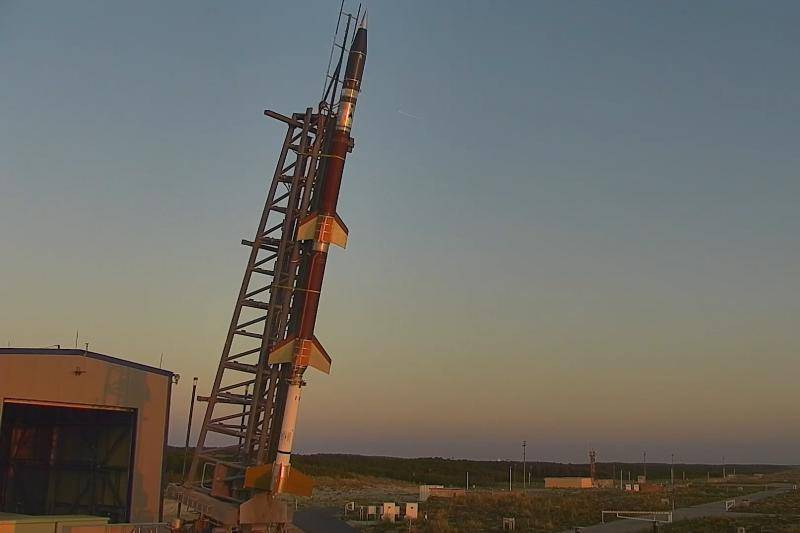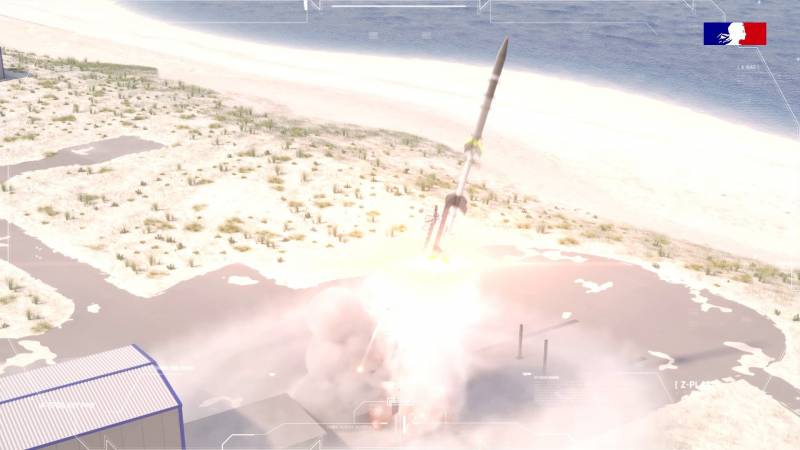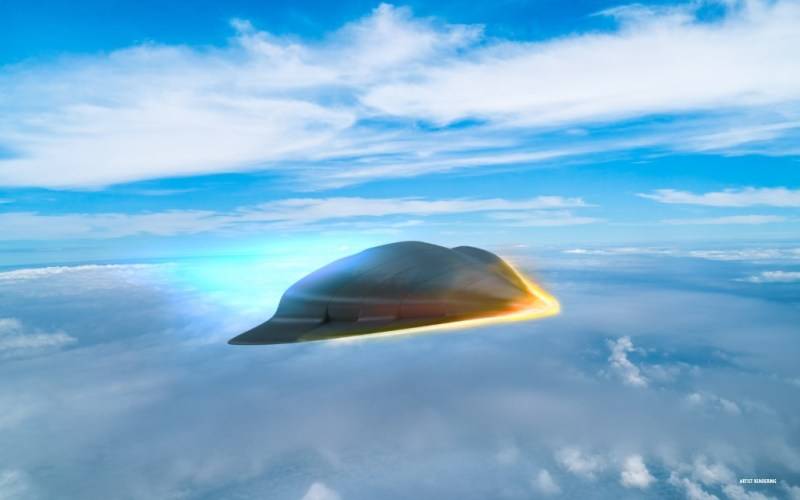France tests first hypersonic aircraft

Rocket with a VMaX aircraft at the starting position. Le Mond Photos
A few years ago, France launched its own hypersonic program, the ultimate goal of which is to create fundamentally new weapons. To date, by order of the military department, an experimental aircraft VMaX has been developed, designed to test new technologies. The other day, he made his first flight and demonstrated his real characteristics. Now the customer and contractor are studying the results of the first flight and making plans for the future.
Experimental development
The development of the “experimental maneuvering aircraft” Véhicule Manœuvrant eXpérimental (VMaX) was first announced by the French Ministry of the Armed Forces in January 2019. As it was reported at the time, the goal of the project is to create and test new technologies. In the future, the experience of the VMAX project can be used to create full-fledged strike systems for the army.
The overall management of the VMaX program was carried out by the Main Directorate of Armaments of the Ministry of Defense (DGA). The development and construction was entrusted to the Ariane Group (a joint venture between Airbus and Safran). The research part of the project was provided by the National Center for Aerospace Research ONERA.
According to the original plans, the development of the project and the construction of the first VMaX product, followed by preparation for testing, should have taken less than three years. The first test launch was planned for the end of 2021. Apparently, the project turned out to be more difficult than expected, and the main stages had to be moved to the right. As it is now clear, the assembly of an experimental aircraft was completed only this year. Test preparation also took place in the recent past.
The first test launch of the VMaX apparatus took place on the evening of June 26 at the Biscarrosse (Reg. Aquitaine) training ground in southwestern France. Takeoff, launching on the calculated trajectory and acceleration to the required speed were provided by a re-equipped geophysical rocket of one of the available models.

Rocket launch. Photo by DGA
The launch was carried out in the direction of the Atlantic Ocean. Having flown along a given trajectory, the prototype fell into the water. A contrail from a rocket and an aircraft was observed in the southern regions of France and in northern Spain.
According to a DGA press release, many new technologies have been used in preparing these tests. Unprecedented technical problems have been solved that will allow the development of the national hypersonic program to continue. In addition, according to the results of these tests, France entered a narrow circle of states capable of creating hypersonic aircraft.
Technical issues
The military department and the developers of the VMaX project have not yet disclosed the appearance of the experimental apparatus and have not named its exact characteristics. The potential of this product in terms of adapting the design to solve specific combat missions also remains unknown. However, there is some information to help build the big picture.
According to the most popular versions, the VMaX prototype is a hypersonic glider without its own propulsion system. The flight is carried out only due to the energy received during acceleration due to the launch vehicle. The appearance of the device is hidden, but it can be assumed that it does not have fundamental differences from foreign equipment of this class.
The launch was carried out using a geophysical rocket, the type of which was not named. It placed the head compartment in the form of a fairing with a hypersonic VMaX inside. The ONERA center has missiles of several models with different characteristics. Based on their parameters, it can be assumed that the experimental aircraft has a length of up to several meters and a disproportionately small width/diameter. Maximum weight - 150-200 kg.
Officials have previously disclosed airspeed targets. According to some statements, VMaX should fly at a speed of more than 5 Mach. According to other sources, this parameter exceeds 6 thousand km / h. Altitude characteristics were not disclosed, but it is clear that the hypersonic part of the flight takes place in the stratosphere.

Presumably a condensation trail from VMaX. Photo Telegram / "Nuclear petrel"
Photographs and videos from bystanders of the flight show the contrail as a curved white line. Its shape can be explained by the influence of air currents or by the maneuvering of the aircraft on trajectories. Apparently, VMaX has a full-fledged autopilot with navigation systems and controls. Without significant loss of kinetic energy, the glider must perform simple altitude and heading maneuvers. How much it can deviate from the original course is unknown.
A hypersonic aircraft must carry a certain payload. In the case of a technology demonstrator, only control equipment and means of recording / transmitting data are required. With the further development of the project, the warhead will take the place of such devices.
Plans for the future
In the near future, the Ministry of Defense, Ariane Group and ONERA will study the results of the first test launch and draw the necessary conclusions. Then it is planned to develop an improved version of the existing project with increased technical characteristics. Such a device was repeatedly mentioned under the name VMaX-2.
Tests of the second version of the hypersonic airframe should take place in 2024-25. Based on the results of this event, the customer and developers will again draw conclusions, as well as determine the future of the entire program and direction. If the military department makes an appropriate decision, then the VMaX program will be developed and will probably lead to the emergence of a full-fledged hypersonic missile system.
How exactly the developments on the current VMaX project can be used has not yet been reported. According to various estimates, the planning warhead can be used as a payload for submarine ballistic missiles. In this case, the only component of France's strategic nuclear forces will receive fundamentally new capabilities and dramatically improve its potential.

Raytheon hypersonic airframe concept
However, the timing of the implementation of all necessary work is still in question. The VMaX-2 project will be brought to testing no earlier than two years later, and after that it will take some time to analyze its results and draw up further plans. The development of a full-fledged warhead and, possibly, SLBMs for it will stretch for several more years. Due to the long development time, carriers of promising weapons, most likely, it will not be the current Triomphant-type SSBNs, but the promising SNLE 3G ships, the development of which began in the recent past.
It should be noted that VMaX is not the only French hypersonic project. So, DGA, together with the Ariane Group, is developing a promising new-generation air-launched cruise missile ASN4G (Air-Sol Nucléaire de 4ème Génération). This product will be equipped with a hypersonic ramjet engine, which is currently being created as part of a collaboration between ONERA and MBDA.
It will take at least 4-10 years to develop, test and prepare for the production of the ASN12G rocket. It is planned to be adopted by the Air Force and the Navy. aviation only in the mid-thirties. Among other things, this shows that at the moment the key technologies of the promising project are in the very early stages of development.
hypersonic club
Thus, the French industry, commissioned by the military department, not only developed a hypersonic aircraft, but also successfully tested it for the first time. This demonstrates its potential and capabilities, and also introduces France into a narrow "club" of countries with hypersonic technologies.
Further development of existing developments over the next few years should lead to the emergence of at least two models of fundamentally new weapons with high performance. Whether it will be possible to create new missiles is still unknown. However, the issue of national prestige in this context has already been resolved - France has shown its technological capabilities.
Information